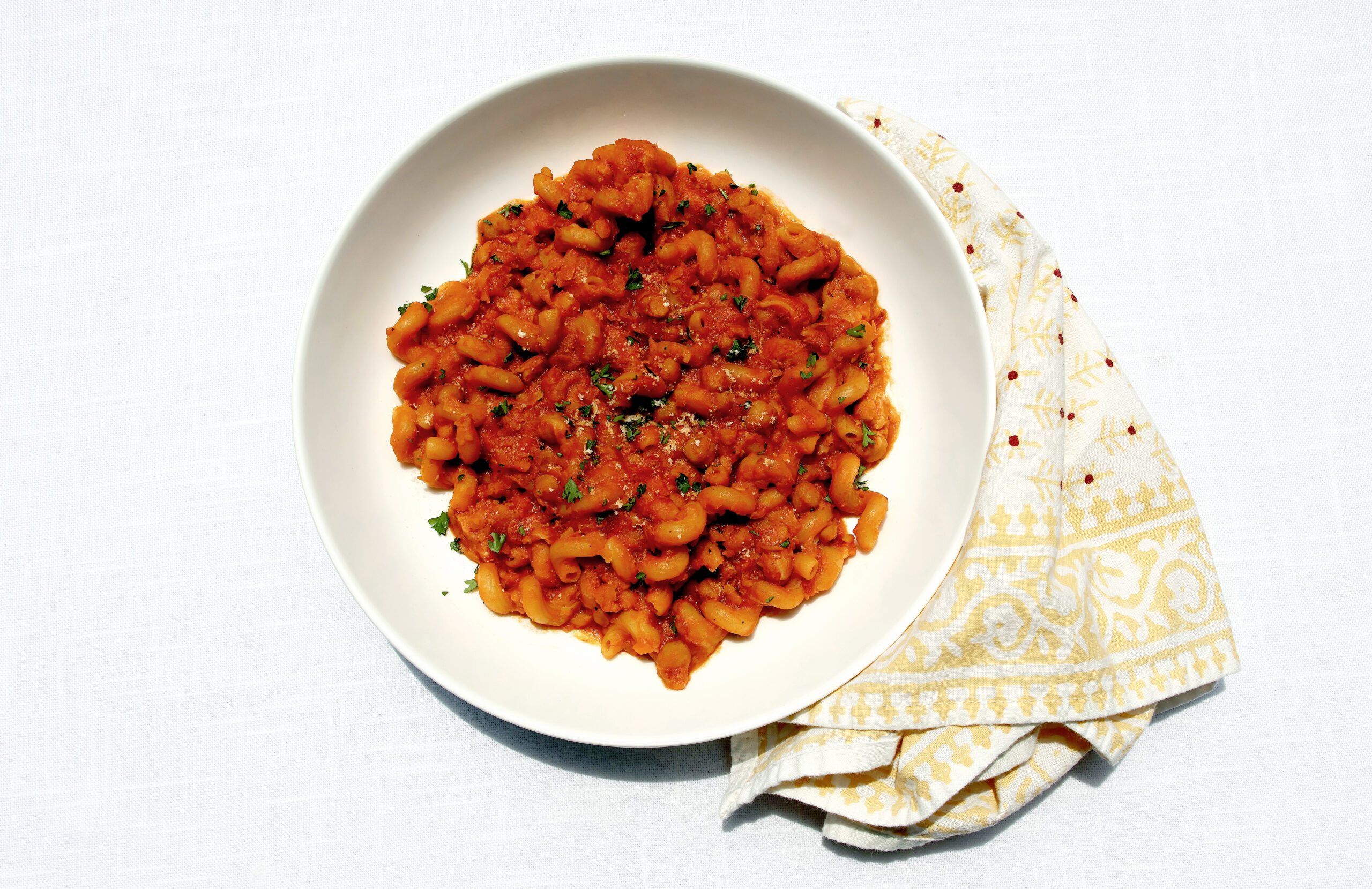By Priscilla Feral
At 13 years old, I discovered a love of pasta sauce from my Italian friend’s grandparents, who either immigrated from Southern Italy or had parents who were born there. Their magic was sauce-making, and the potatoes, pasta and food they served, while constantly telling me I was too thin, far outpaced American-style home cooking.
I’ve spent my adult life favoring Italian cooking over other cuisines without knowing (until recently) that I must use San Marzano whole canned tomatoes. As one New York friend whose ancestors hail from Southern Italy advised, when you buy whole canned tomatoes, you can see the quality they are. If she wants tomatoes crushed, she does it herself. Her cultural experience extends to sauce, which depends on the quality of the tomatoes. She says, “Good tomatoes mean you don’t have to do much to have good sauce.”
And there you have it.
Italian cooking 101 recognizes that its food is defined region by region. Often, people from the various regions will cook the same dish differently. Each region has recipes it’s known for that you won’t find elsewhere. There are common rules when executing the recipes, such as not overcooking pasta, using extra virgin olive oil, and adding pasta water— the water that pasta was boiled in—which retains the starch to your advantage.
Cucina povera is a cooking style that originated with rural Italian peasants, using inexpensive ingredients they grew or that were affordable. As vegans, we have much to choose from, as the staples of cucina povera were seasonal fruit, vegetables and pulses.
Central and Southern Italy is typically seen as the “cradle” of cucina povera because they had significant populations of rural poor. Beans were cheap and plentiful, and one could make a legume recipe every day for months and not repeat any of them. Those recipes often feature legumes, including chickpeas, lentils and peas, as well as bread, gnocchi, orecchiette pasta and sauces.
My friend who has a taste for cucina povera says we almost never find these classic Southern Italy dishes in Italian restaurants in America. Once you acquire the taste, as I have, there is no turning back.
My curiosity about the food and my interest in the culture is why I’m traveling to Southern Italy in October.
Until then, I’m devoted to this outstanding pasta with chickpeas recipe from Southern Italian-born food lover Vincenzo Prosperi. I’ve adapted it below for vegans, and it’s the ultimate Italian comfort food.
Vincenzo, who has an Italian cooking show on YouTube, learned to cook from his grandmother. This recipe is made in one pot and it rings all my bells.
Pasta with Chickpeas (Pasta e Ceci)
Serves 2-3
Ingredients:
1 – 3/4 cups of either Ditalini Rigati or Cavatappi pasta
2 cans chickpeas (15 oz. each)
1 carrot, finely chopped
¼ onion, finely chopped
garlic clove, crushed
1 can whole peeled San Marzano tomatoes (14.5 oz.)
1 sprig fresh rosemary
3-4 bay leaves
4 Tbsp extra virgin olive oil, plus a little more
Vegan Parmesan cheese
Salt and pepper
20 oz. of water
Preparation:
- Drain and rinse chickpeas, keeping each portion in a separate bowl.
- Chop carrot and onion for the soffritto and set aside. Be sure to chop it finely, making it smaller than the pasta.
- Crush garlic and set aside.
- Add at least 2-3 Tbsp of olive oil to one of the bowls of chickpeas. Mash it very well with a potato masher until it’s a creamy consistency. Add a few splashes of water, if you’re unhappy with the consistency.
- Use an immersion blender to gently crush tomatoes.
- Heat a large pot on low heat and add 4-5 Tbsp. of olive oil. Once the oil is sufficiently heated, add the soffritto.
- Stir and allow to simmer. Then add bay leaves and fresh rosemary. Continue stirring to coat it all in the oil and cover the pot so flavors infuse.
- After approximately 5 minutes, remove the lid and add crushed garlic. Stir ingredients again, and add 2 Tbsp. of water to prevent garlic from burning. Cover for another 5 minutes to combine flavors.
- Next, remove the lid and some of the rosemary leaves from the stem. Then, remove the stem from the pot.
- Add crushed tomato sauce to the pot and quickly stir. Add the second can of whole chickpeas plus salt and pepper to taste.
- Stir again and remove the bay leaves and add pasta. Once pasta is added, stir vigorously to combine the sauce and soak in the flavor.
- Once everything is well mixed, add 8 oz. of water and stir continuously as the pasta cooks.
- After about 5 minutes, add another 8 oz. of water and keep stirring for 5 – 8 minutes.
- Now add chickpea cream, scraping the sides of the bowl to remove it all.
- Stir the chickpea cream into the pot to mix with the sauce and pasta.
- Continue to stir and as you mix in the chickpea cream add up to another 4 oz. of water. Don’t worry if it looks a little runny at this point. Both the pasta and chickpea cream will continue to absorb the water and thicken up nicely.
- Keep stirring for another 2 minutes for the pasta to cook al dente. Taste as you go to make sure it’s perfect.
- Once the pasta is al dente, remove the pot from the heat and move it around. Then quickly stir to release heat.
- Add some vegan Parmesan cheese (as much as you like) and stir once more.
Now your pasta with chickpeas is ready to serve. Scoop into a shallow pasta bowl and top with more vegan Parmesan, if desired.

